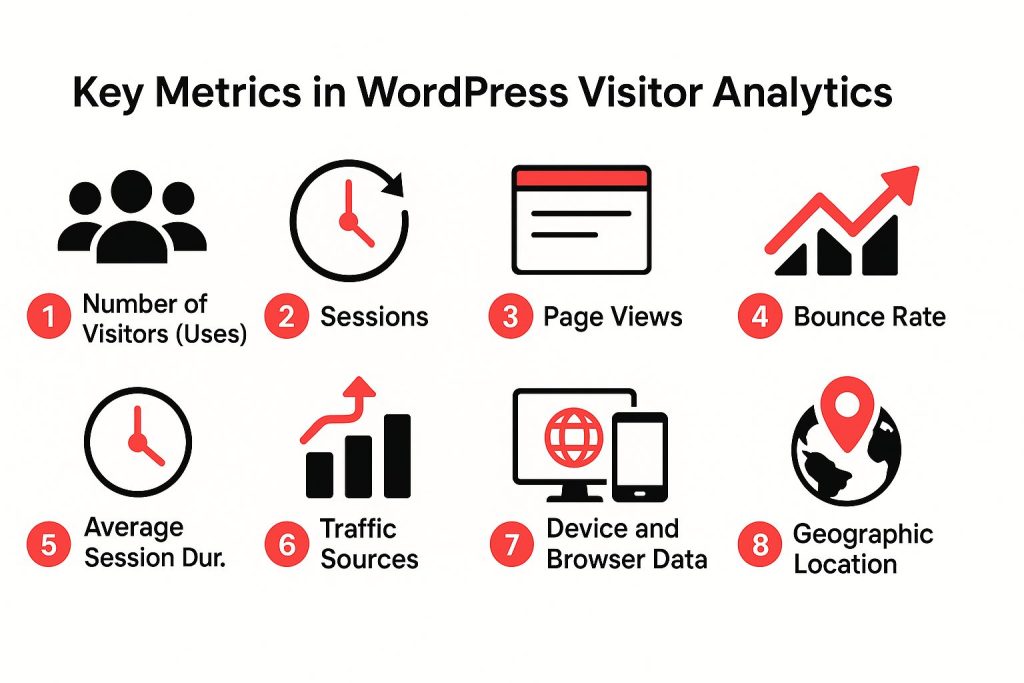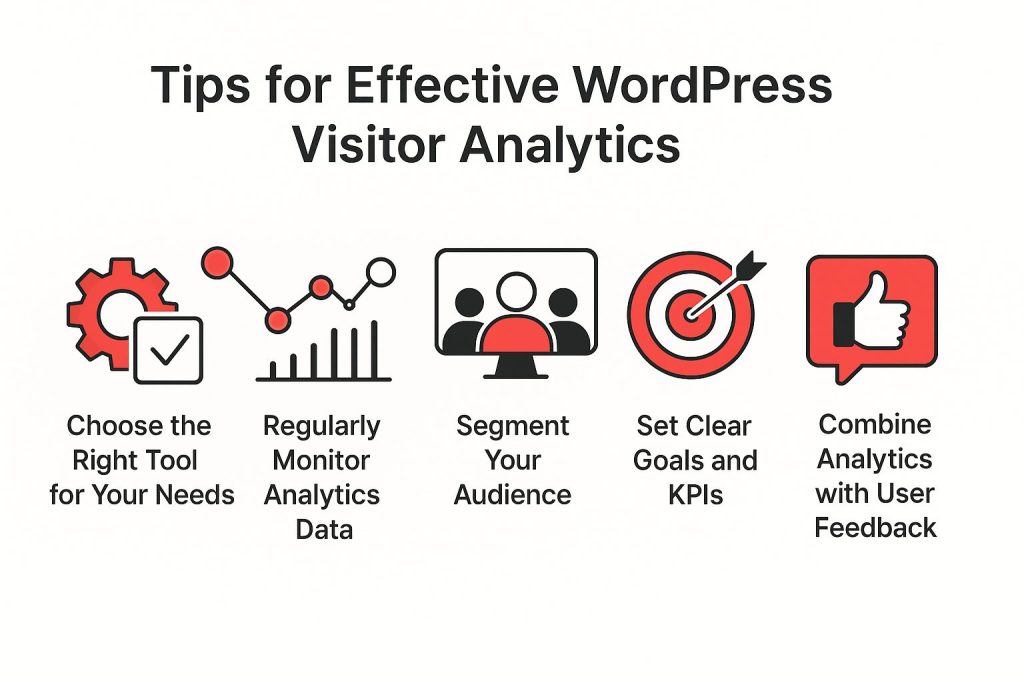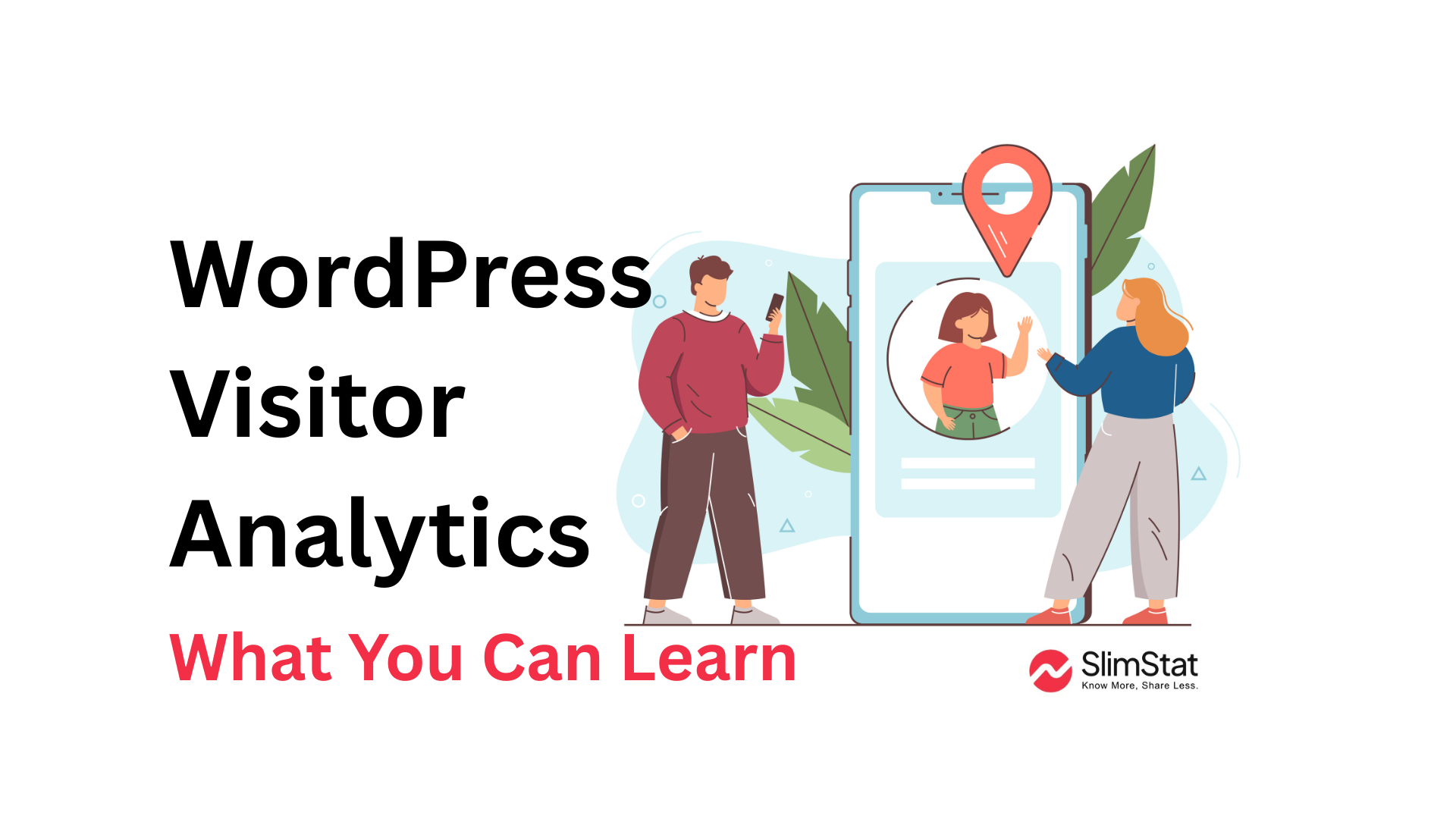If you have a WordPress website, understanding your visitors is crucial for success. That’s where WordPress analytics tools come into play. They provide valuable insights into who your visitors are, how they behave, and how you can improve your site to better meet their needs. Many site owners rely on platforms like Google Analytics to monitor and interpret visitor data effectively.
In this article, we’ll explore what WordPress visitor analytics is, the key metrics you should track, and the actionable lessons you can learn from the data to grow your site effectively.
What Is WordPress Visitor Analytics?
WordPress visitor analytics refers to the collection and analysis of data about visitors to your WordPress website. This data helps you understand user behavior analysis, traffic sources, engagement levels, and much more.
By leveraging analytics, you can uncover patterns and trends that inform content creation, marketing strategies, site design, and user experience improvements.
Why WordPress Visitor Analytics Matters
With so many websites competing for attention, having data about your visitors is like having a roadmap to success. Understanding how users interact with your site through event tracking in WordPress helps you uncover the real value behind each visit.
To stay ahead, it’s also crucial to apply data-driven marketing strategies that turn analytics into measurable growth. Here are some key reasons why WordPress visitor analytics is important:
- Know Your Audience: Identify who visits your site, where they come from, and what they’re interested in.
- Measure Engagement: Track how users interact with your content and which pages keep them hooked.
- Optimize Marketing: Understand which channels bring the best traffic and conversions.
- Improve Content Strategy: Focus on the topics and formats that resonate most with your visitors.
- Increase Conversions: Spot bottlenecks in user journeys and improve calls to action.
- Make Data-Driven Decisions: Replace guesswork with solid evidence to guide growth.
Key Metrics in WordPress Visitor Analytics

To get the most from WordPress visitor analytics, it’s important to understand how different metrics work together. Before diving in, you might want to explore our breakdown of sessions vs users vs pageviews to clarify how these data points relate to one another.
You can also check out this comprehensive website metrics guide for a deeper look at how analytics data shapes content, marketing, and performance strategies.
1. Number of Visitors (Users)
This metric shows how many unique individuals have visited your site within a specific time period. It helps you understand the size of your audience.
2. Sessions
Sessions count how many times visitors actively engage with your site. One user can generate multiple sessions.
3. Page Views
Page views track the total number of pages viewed. It indicates content popularity and overall site activity.
4. Bounce Rate
Bounce rate measures the percentage of visitors who leave after viewing only one page. A high bounce rate may indicate poor user experience or irrelevant content.
5. Average Session Duration
This tells you how long visitors stay on your site during a session. Longer times typically reflect better engagement.
6. Traffic Sources
Knowing where your visitors come from — organic search, social media, referrals, or direct traffic — helps you evaluate your marketing efforts.
7. Device and Browser Data
Tracking which devices and browsers visitors use lets you optimize your site for the best experience across platforms.
8. Geographic Location
Understanding visitor locations can help tailor content and marketing campaigns to regional preferences.
What You Can Learn from WordPress Visitor Analytics
Each metric in WordPress visitor analytics tells a unique story about how people interact with your site. Some reveal how many users arrive, others show what content keeps them engaged, and a few highlight where you might be losing traffic. By connecting these data points, you can see the bigger picture—how visitors discover, explore, and respond to your content—and make smarter, data-driven improvements across your website.
Understand Visitor Behavior
Analytics reveals how visitors navigate your site — the pages they visit first, the path they take, and where they drop off. This insight helps you improve navigation and content flow. Tools like Slimstat’s event tracking make it easy to monitor user actions in real time.
Identify Popular Content and Trends
Tracking page views and session duration helps you discover which articles, products, or pages are most popular, allowing you to create more content that your audience loves. You can also explore content performance analysis guides from
How to Access WordPress Visitor Analytics
To make the most out of your WordPress visitor analytics, you need more than just data — you need a clear strategy for how to use it. The following tips will help you turn raw numbers into meaningful insights, choose the right tools, and build a consistent analytics workflow that supports your website’s growth.
Built-In WordPress Tools
Some themes and hosting providers offer basic visitor stats, but these are often limited in scope. If you want a deeper, privacy-focused approach, consider using Slimstat, which offers detailed in-dashboard analytics without third-party data sharing.
Analytics Plugins
Many WordPress plugins provide visitor analytics directly in your dashboard, including real-time stats, page views, and visitor demographics. For a comparison of how plugin-based analytics differ from external tracking, check out our guide on event tracking vs pageview tracking.
External Analytics Platforms
Tools like Google Analytics and Matomo offer powerful visitor tracking, but require integration with your WordPress site and may raise privacy concerns for some users.
Tips for Effective WordPress Visitor Analytics

To make the most out of your WordPress visitor analytics, you need more than just data — you need a clear strategy for how to use it. The following tips will help you turn raw numbers into meaningful insights, choose the right tools, and build a consistent analytics workflow that supports your website’s growth. For additional guidance, check out our post on AI prompts for website analytics to see how artificial intelligence can enhance your data interpretation.
Choose the Right Tool for Your Needs
If privacy and data ownership are priorities, use plugins that store data locally rather than cloud-based services. Tools like Slimstat help you maintain full control over your analytics data while staying GDPR-compliant.
Regularly Monitor Analytics Data
Make it a habit to check your visitor analytics weekly or monthly to spot trends and act on insights promptly. Learn how real-time dashboards in Google Analytics 4 can help you monitor key performance metrics instantly.
Segment Your Audience
Analyze different visitor segments such as new vs. returning users or traffic by device type for deeper understanding. You can also use HubSpot’s segmentation guide to explore best practices for meaningful data segmentation.
Set Clear Goals and KPIs
Decide what success looks like for your website and use visitor analytics to track progress toward these goals. If you’re unsure where to start, read our quick guide to real-time analytics for insights into setting measurable, actionable KPIs.
Combine Analytics with User Feedback
Quantitative data is powerful but complement it with qualitative feedback to get a full picture. Tools like Hotjar let you collect real-time visitor feedback and visualize user behavior to enhance your decision-making.
Conclusion
WordPress visitor analytics is a vital tool that helps you understand your audience, improve your website, and grow your online presence. By tracking key metrics such as visitors, sessions, page views, and traffic sources, you can make data-driven decisions that enhance engagement and conversions.
Whether you use built-in tools, plugins, or external platforms, regularly analyzing your visitor data ensures you stay ahead of the competition and deliver what your audience truly wants. To explore how analytics tools compare in terms of accuracy and privacy, check out this detailed comparison of analytics platforms by G2.
Ready to take the next step? Visit the Slimstat Pricing page to choose a plan that fits your needs and start gaining deeper insights into your website traffic today.
Frequently Asked Questions
Can WordPress track visitors?
Yes, with plugins like SlimStat or Jetpack, WordPress can track visitors, page views, and user behavior.
What is the difference between a view and a visitor on WordPress?
A visitor is a unique person accessing your site, while a view is counted every time a page is loaded—even by the same visitor.
What is the visitor statistic in WordPress?
Visitor statistics show how many unique people accessed your site, where they came from, and what content they viewed.
How do I track user page views in WordPress?
Use an analytics plugin such as SlimStat, Jetpack, or Google Analytics to track individual page views.

